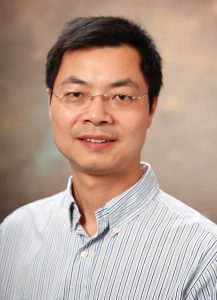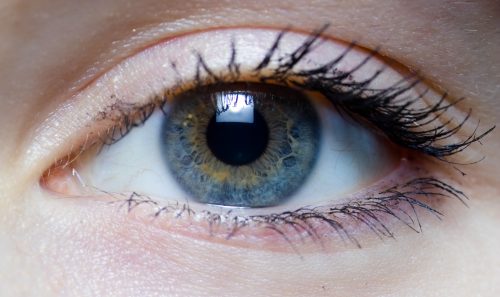A lizard escaping from a predator can lose its tail as a defense mechanism—while the detached tail writhes on the ground and confuses the predator, the lizard scurries away. During the following months, the lizard grows back a new tail. How does this regeneration occur? The answer lies in the behavior of stem cells, specialized cells that can both renew themselves and generate various other cell types.
Humans have stem cells too, although they behave differently from those in the lizard’s tail. Many distinct populations of stem cells reside within each of us. Neural stem cells in our brains, for instance, can become new neurons or glial cells. Blood stem cells in our bone marrow can turn into new white blood cells, red blood cells, or platelets coursing through our bloodstream. Since stem cells are extremely versatile and can generate a number of new cell types, a recent goal of researchers and clinicians has been to harness their regenerative abilities for replacement therapies—restoring lost organs and tissues in human patients.
Bo Chen, associate professor of Ophthalmology at Yale, studies human retinal stem cells. Recently, his team figured out how to reawaken the stem cell ability of a special group of dormant cells, called Muller glial cells (MGs). MGs are found in the retina, a tissue at the back of the eye that detects visual information in the form of light. While MGs in humans are not true stem cells, they can behave like stem cells under certain circumstances such as extreme injury. MGs are normally “asleep” in an inactive state, but injury can reawaken them and cause them to reenter the cell cycle and develop regenerative stem cell abilities. Chen and his research team discovered how to “wake up” MGs and cause them to proliferate without injuring them, a strategy that could potentially help to restore retinal cells damaged by disease.
In invertebrates such as zebrafish, MGs are permanently active retinal stem cells capable of regenerating damaged and lost cells. In mammals, however, MGs typically remain dormant and incapable of spontaneously re-entering the cell cycle without outside intervention. While past studies have shown that severe retinal injuries can stimulate MG proliferation and stem cell activation, Chen found that injuring MGs was counterproductive to the goal of regeneration. “We wanted to do something different: activating these cells without inflicting any damage to the retina. Our goal was to make neurons without having to kill any neurons in the first place,” Chen said.
The cell’s decision to remain dormant or become active depends on a network of signaling pathways that is poorly understood. Chen’s team suspected that the Wnt signaling pathway was involved, since this pathway is also involved in embryonic development and the regulation of stem cell behavior. Thus, the researchers decided to test if they could reawaken MGs by increasing the activity of the Wnt pathway.

In the traditional signaling pathway, Wnt proteins bind to cell receptors to initiate a cascade that eventually results in inhibition of the GSK3 protein. GSK3 normally degrades β-catenin, a signaling molecule that causes a number of cellular effects. Therefore, when the Wnt signaling pathway is activated, GSK3 is inactivated and β-catenin accumulates inside the cell. The increase in β-catenin then turns on a set of genes that can change the activity of the cell by promoting proliferation. To study how Wnt signaling affects MGs, Chen’s team used viruses to transfer the β-catenin gene into mouse MG cells, thus mimicking the effects of an activated Wnt pathway.
After the team transferred the β-catenin gene into the cells, a significant number of MGs began to reenter the cell cycle and proliferate. To confirm the role of β-catenin, the researchers next deleted the GSK3 gene, which encodes for the protein that degrades β-catenin—again causing a buildup of β-catenin. Once again, they observed significantly increased proliferation of MGs. They also discovered that β-catenin directly affected the expression of a gene called Lin28, which has been shown to regulate stem cell decisions.
Chen’s team had made a remarkable discovery, being the first to activate the proliferative response of MGs without retinal injury. Now that they were capable of waking up MGs, they wanted to know whether their reactivated MGs were behaving like true stem cells—that is, whether the MGs were capable of generating other cell types. They transferred the β-catenin gene to a population of MGs, and gave them time to activate and differentiate. When they analyzed the gene expression of the MGs, they found that the reactivated MGs expressed similar genetic profiles to several retinal cell types, suggesting that the MGs were able to differentiate in a stem cell-like manner.
The impact of Chen’s study lies in its implications for stem cell regenerative therapy. “Stem cell therapies are promising for treating diseases of the human retina, where there is a loss of retinal cells,” Chen explained. These diseases include macular degeneration and glaucoma, both of which cause vision problems and can eventually lead to blindness. If stem cells could be used to regenerate lost retinal cells, then scientists and clinicians would have a novel tool to treat these types of degenerative retinal diseases. “We can activate this group of MG cells and potentially direct their differentiation into any type of retinal neurons, which could replace lost cells. Essentially, we are asking our retinas to repair themselves,” Chen said.
Although the preliminary results are promising, Chen and the other scientists still do not fully understand the complex process of MGs differentiation. For instance, the researchers still do not know how reactivated MGs choose to become one cell type or another. “The challenge now is that even when the MGs reenter the cell cycle, they might not make the exact type of neuron we want,” Chen said. He would like to better understand the signaling pathways that guide MG differentiation in order to produce the cell types required for regenerative therapy. In the future, Chen would like to test different sets of factors that control MG differentiation. “We hope to use these factors to guide the differentiation of the reactivated MGs to make the types of cells that we want.”
Chen and his team are currently focusing on two types of neurons: photoreceptor cells and ganglion cells. Both cell types are extremely important in eyesight, detecting light from the environment and converting it into electrical signals that can be routed to the brain. If scientists such as Chen’s team successfully produce new photoreceptor cells and ganglion cells from MGs, then these cell types could be restored in patients who have lost them due to injury or disease.
Retinal stem cells are an important research topic, and Chen’s findings will be extremely valuable for other researchers in the field. For the first time, retinal cells regained stem cell abilities without injury. As the discovery improves our understanding of the fundamental signaling pathways behind stem cell differentiation, researchers could soon harness the abilities of stem cells to heal damaged tissues in patients. Chen is optimistic that other scientists will continue to build upon his findings. “This type of research will ultimately greatly benefit patients if we are successful,” he predicted.

